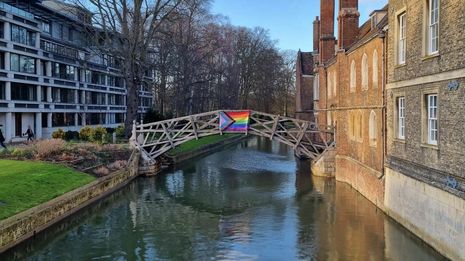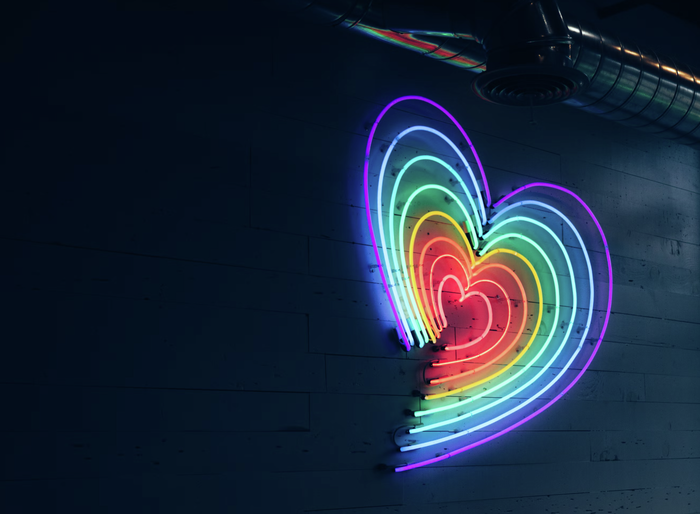Why I don’t want a ‘boyfriend’
What you call your partner can be just as important for your identity as it is to your relationship, writes Maddy Browne

It all started with a TED talk. Before I had even been in a relationship, I knew it wouldn’t look quite like what I had once expected. First of all, the ‘handsome prince’ at the end of the fairytale was just as likely to be a ‘handsome princess’. This would, in turn, bring up questions about what the rest of the fairy tale might look like. After watching Misty Gedlinske’s TED talk, ‘Bisexuality: the invisible letter “B”’, I realised how important it would be for me to maintain a connection to my sexuality, regardless of who I was with. After getting together with Jack, this was something I was confronted with in real time.
“I would never have to feel like I was in a straight relationship, and it was liberating”
As well as talking more generally about bi-erasure (despite us making up 52% of the LGBTQ community!) Gedlinske’s Ted Talk also drew attention to an important phrase. She was in an opposite-sex marriage, not a straight one. This simple change in wording meant all the difference. Suddenly it was not assumed that a man and a woman in a relationship were also heterosexual. But it also represented a bigger shift: I would never have to feel like I was in a straight relationship, and it was liberating.
The only catch was that, when I started talking to people about “my boyfriend”, it felt odd. The feeling was more than potentially passing as ‘straight’, within the privilege that also comes with passing. (This is at a university where me and my friends joke that you’d be better off assuming that everyone is bi than everyone is straight.) The word failed to encompass the queer relationship that we have. Somehow the words ‘boyfriend’ and ‘girlfriend’ did not do it justice, as reflected in my sense of sexuality and in the attitudes we both have towards the relationship.
Using ‘partner’ or ‘spouse’ as alternatives also felt too old, or too committed, as it’s what my parents call my respective step-parents. On one hand, using ‘partner’ does normalise the word for queer couples and individuals who need gender-neutral language, as a historically inclusive alternative. On the other hand, I didn’t want to feel like I was queerbaiting, ironically enough. There is a sense from queer people that there is an argument to be had for both sides, within wider debates about allyship.
“I still felt like I was ‘lying by omission’, whichever word I chose”
I still felt like I was ‘lying by omission’, whichever word I chose. For Gedlinske, this is how she described being in the closet. Now I am out, there seems to be a sense that there is still something missing, as if the baseline is no longer straight, but still binary. The words still failed to match up.
As I mentioned before, queerness can come from attitude as well as identity. So, the decisions that Jack and I make within our relationship can move us away from the societal expectations and words that we might find stifling – not rejecting them by default but re-examining them so as to find the choices that best suit individual needs. These choices are often really intangible, and irrevocably tied up with defying patriarchal expectations (or, simply maintaining a healthy relationship). Do we split everything, try and perform equal emotional labour, and be especially vocal about each other’s needs because this defies gender stereotypes? Or is this just creating healthy boundaries?
“It’s ok if the words we use to describe those we love ‘don’t quite fit’”
Or, is this part of something defined by Nick Walker as ‘neuroqueering’? For Jack, the words and the choices also represent parallel ideas about passing as neurotypical and defying similar norms. We are not in a neurotypical relationship, either; we need to be able to understand this relationship outside of societal norms, on both accounts. As Walker explains at the end of her book, Neuroqueer Heresies, "queering neuronormativity" is a lot like "queering heteronormativity". The practice can be vitally affirming to neurodivergent individuals whose needs necessitate behaviours outside of neurotypical norms. Both processes are intrinsically linked, when each "queering", each "active subversion" enacts the other at the same time. It is not surprising then that autistic people are more likely to identify as LGBTQ+, and so the categories overlap even more. These are conversations about needs, and Jack and I have been having them more and more, as we realise what works for us and figure out what doesn’t.
I’m afraid I don’t have a grand solution for when it doesn’t quite work. In the end, it’s ok if the words we use to describe those we love ‘don’t quite fit’, or are more complicated than we realise. It’s ok to need affirmation in non-normative ways. The most important thing is acknowledging the disconnect in the first place.
Of course, we can also come up with our own. In one of my favourite TV shows, One Day At a Time, one of the characters starts dating a non-binary person called Syd, who becomes her "Syd-nificant other". If you have any heartwarming pun-related names, I’m all ears. In the meantime, I’ll be watching Queer Eye with Jack.
 News / Cambridge students set up encampment calling for Israel divestment6 May 2024
News / Cambridge students set up encampment calling for Israel divestment6 May 2024 News / Cambridge postgrad re-elected as City councillor4 May 2024
News / Cambridge postgrad re-elected as City councillor4 May 2024 News / Proposed changes to Cambridge exam resits remain stricter than most7 May 2024
News / Proposed changes to Cambridge exam resits remain stricter than most7 May 2024 News / Some supervisors’ effective pay rate £3 below living wage, new report finds5 May 2024
News / Some supervisors’ effective pay rate £3 below living wage, new report finds5 May 2024 Fashion / Class and closeted identities: how do fits fit into our cultures?6 May 2024
Fashion / Class and closeted identities: how do fits fit into our cultures?6 May 2024






